Designer Toy Dimensions: Crafting Collectibles for Every Space

When starting a new project, one of the first questions I ask is: 'What size are you thinking for this designer toy, collectible, or art piece?'
It's a simple question, but it opens up some important considerations:
- Where will the collector display this piece?
- What other toys are in their collection?
- Who's the target collector, and what's their space like?

Let's break it down a little:
For collectors with limited space, like a desk or small apartment, 3-5 inch toys are usually the sweet spot. They're perfect for blind boxes and small collectibles. These compact pieces allow collectors to build a diverse collection without overwhelming their space. Think about the joy of having a mini art gallery right on your work desk - it's both inspiring and space-efficient.
Those with more room often go for larger pieces. The IKEA Kallax shelves are popular for displaying these toys - they're versatile and can be customized with glass doors and lights. For these shelves, keeping toys under 11 inches (28 cm) works well. This size range allows for more detailed designs and impressive presence without dominating the entire room. Imagine a well-lit Kallax unit showcasing a curated collection of mid-sized designer toys - it's like having your own personal museum!
Then there are the serious collectors with dedicated spaces. For them, size isn't really a limitation. These enthusiasts might have entire rooms or even small galleries devoted to their collections. They're often looking for statement pieces - larger sculptures or limited edition items that can serve as centerpieces in their displays. For these collectors, a 3-foot tall designer toy isn't out of the question!
It's worth noting that collectors often have specific preferences. Some might focus on a particular color scheme, while others collect different versions of the same toy. Understanding these quirks helps in designing pieces that really connect with your audience. For instance, some collectors might be drawn to monochromatic designs, seeking out toys in shades of black, white, and gray. Others might be completionists, aiming to collect every color variant of a particular figure. Knowing these preferences can guide your design choices and even inform your production decisions.
 |
Now, let's talk materials:
- Vinyl works great for toys with more volume, but there's a sweet spot. If the toy is too large, you might run into bending issues. For smaller pieces, vinyl isn't ideal for capturing sharp details. However, vinyl is durable and has a nice feel to it, making it popular for mid-sized figures. It's also relatively cost-effective for larger production runs.
- Resin is excellent for detailed small-scale pieces but can be fragile and heavy in larger sizes. The level of detail you can achieve with resin is impressive - think intricate textures and sharp edges. It's often used for limited edition runs or high-end collectibles where detail is paramount.
- Polystone is a good option for bigger pieces, balancing detail and weight. It can capture fine details while providing a solid, weighty feel that collectors often associate with quality. Polystone is frequently used for larger statues or high-end collectibles.
- There are also other materials to consider, like PVC for more affordable options, or even wood or metal for unique, artisanal pieces. Each material brings its own characteristics to the table, affecting not just the look and feel of the toy, but also its durability, weight, and production cost.
Keep in mind that some collectors have strong preferences about materials. Some might exclusively collect resin figures for their detail, while others might prefer the durability of vinyl. Understanding your target audience's material preferences can be just as important as nailing the design itself.
Lastly, don't forget about shipping. The size of your toy directly impacts shipping costs, which affects both your expenses and the final price for collectors. A 12-inch figure might look amazing, but if it costs a fortune to ship, it could price itself out of the market. Consider designing packaging that's both protective and space-efficient. Some collectors even value the unboxing experience, so your packaging design can be an extension of the toy's aesthetic.
 |
In the end, choosing the right size for your designer toy involves balancing aesthetics, practicality, and your target audience's preferences. It's about creating something cool that fits well in a collection and doesn't break the bank to ship. But it's also about understanding the ecosystem of collecting - how your piece will fit into someone's life, their space, and their existing collection.
Remember, every size has its place in the world of designer toys. From tiny desk buddies to impressive centerpieces, there's a collector out there for every scale. Your job as a designer is to find that sweet spot where your creative vision meets the practical realities of production, shipping, and collecting. It's a challenge, but it's also what makes designing these pieces so rewarding!
If you have any questions or thoughts, please leave a comment below or you can email me: Oasim@karmieh.com for any enquiries.
I hope you found this article helpful, if you would like to learn more about the process that goes behind Designer Toys, you can join me on Patreon https://www.patreon.com/karmieh
And you can check out my YouTube channel https://www.youtube.com/@karmieh where I post videos about Making of Art Toys, tools, paints, primers and evertyhing you need to know to create your own art toy.






Leave a comment